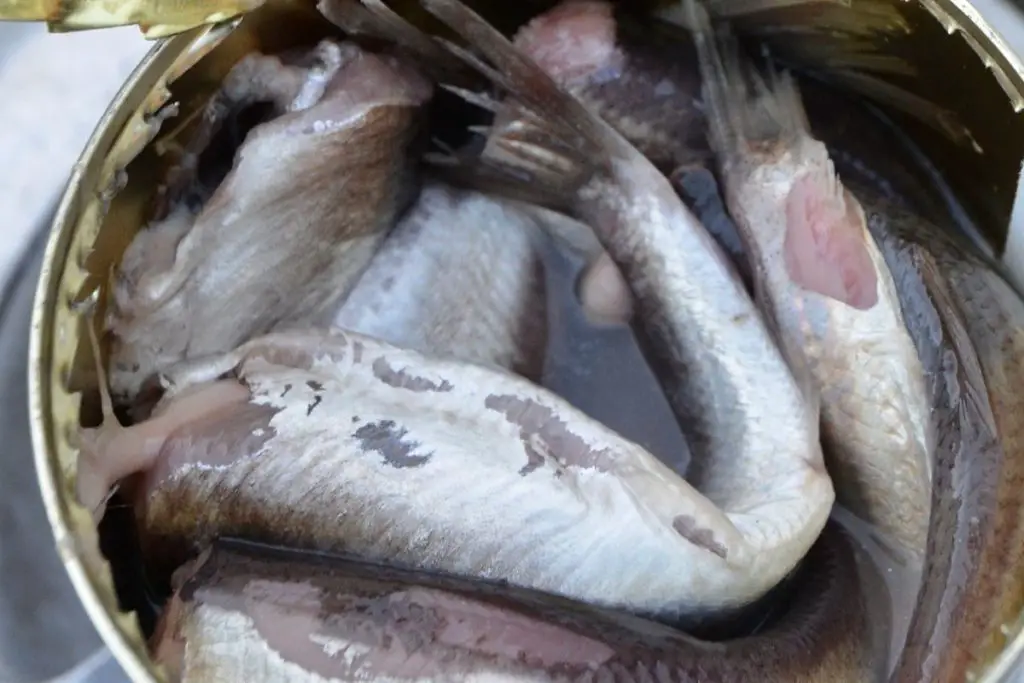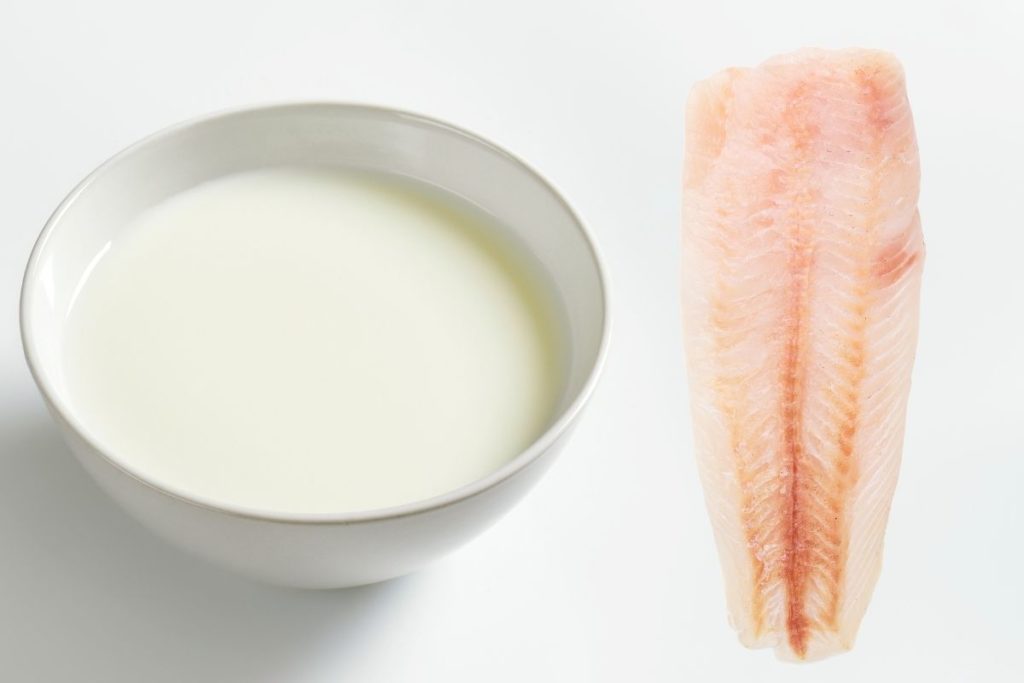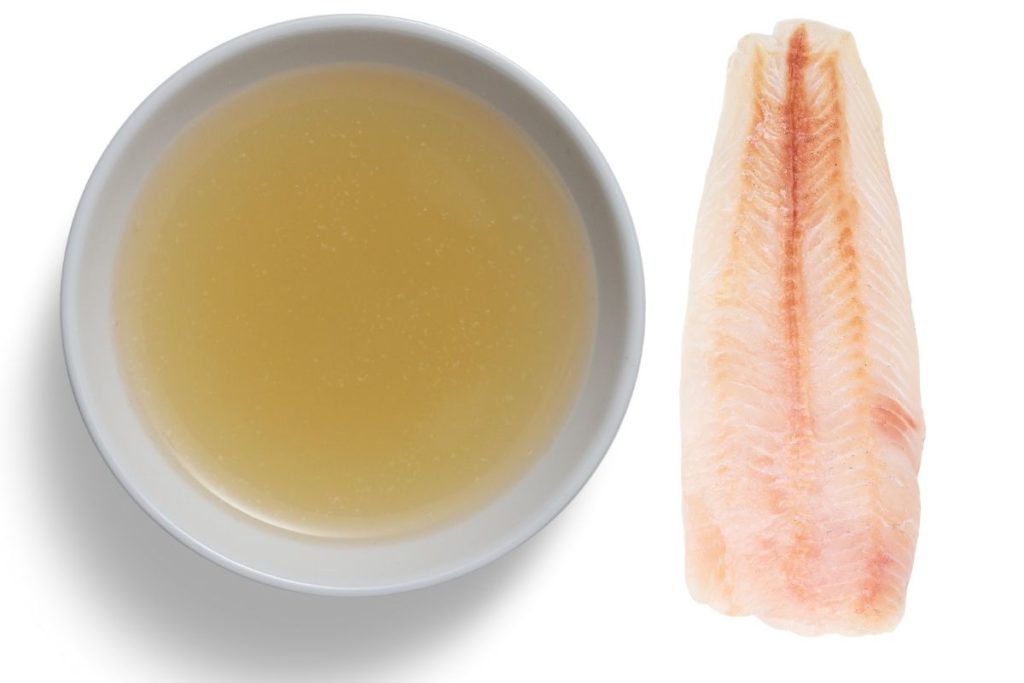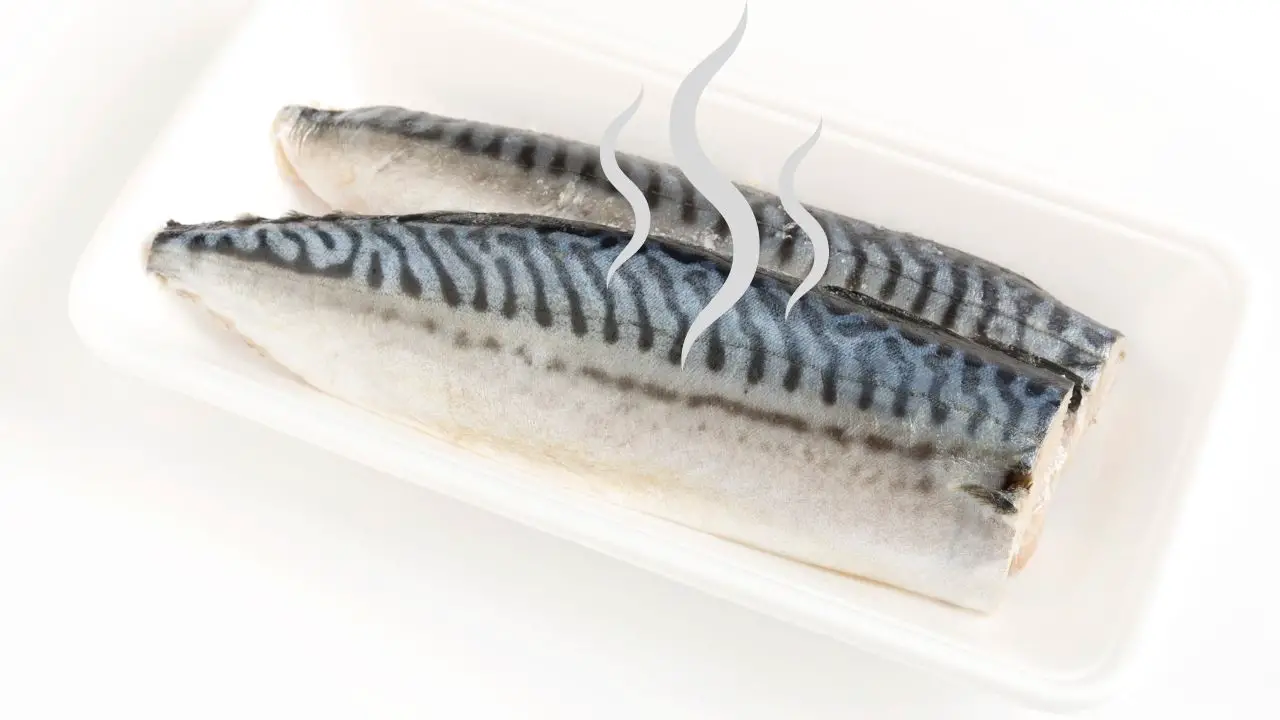If you can’t stand fish with a strong fishy odor, then there is no help for Surströmming, a fermented and salted Baltic Sea herring with a truly putrid smell, popular in Swedish cuisine.

Yes, that was an extreme example, and in general, fresh or properly stored fish should smell fresh without a strong fishy odor. But for some people, even milder varieties such as flounder, tilapia, catfish, halibut, and salmon could smell and taste a bit too funky.
But don’t worry; you don’t need to give up on this vital source of protein and omega-3 fatty acids. Here are some effective tips and tricks on how to remove fishy taste and smell from fish.
First, How To Tell If Fish Is Fresh?

According to the U.S. Food and Drug Administration, you have to look for certain characteristics in fresh fish [1].
Things like color or smell can change due to other circumstances, so it’s not good to take them as the sole indicator of whether or not a fish is fresh. However, considering these signs as a group is a good measure of freshness.
First, consider the temperature the fish is refrigerated or displayed. Ensure the fish is always frozen, refrigerated, or on fresh ice, as it will lose freshness fast in warm temperatures.
Next, you should check the fish’s eyes. Transparent, clear, and shiny eyes indicate freshness, while milky-looking and dull ones suggest a fish that has begun to rot. Likewise, look for flesh color and structure—firm flesh that springs back when touched without any discoloration or drying.

Finally, consider the smell. Fresh fish must always have a pleasantly fresh and mild scent, sometimes slightly salty or “sea-like.” If a fish starts smelling fishy, sour, or ammonia-like, that is a good—but not absolute—indicator that it may have begun to decompose.
Read Also: How To Tell If Frozen Fish Is Bad? – (5 Signs of Spoilage).
Why Does Fish Start To Smell Fishy?
Fish start to smell fishy due to a chemical process that begins right after they die.
Ocean fish have an odorless component called trimethylamine oxide (TMAO) that allows them to have fluid balance in the sea. However, as they die, the bacteria in them start to transform TMAO into trimethylamine (TMA), an organic molecule notorious for its strong smell—responsible for the fishy smell [2].
To recap, fresh fish has not had much time for the bacteria to transform TMAO into TMA, which is why it has no smell. Freezing fresh seafood right away will stop the bacteria from acting up, which delays the TMA from forming, but fish left in temperatures above 40°F (4.4°C) will start the process much sooner [1].
Read Also: How To Store And Handle Fish After You Catch Them.
Methods To Remove Fishy Smell And Taste From Fish

If the transformation from TMAO into TMA is what triggers the distinctive fishy smell and taste, then the best techniques to get rid of it will target the TMA molecules and change their structure to minimize the fishy smell and taste.
Luckily, science is full of possibilities, and there are six techniques you can try.
1. Wash Your Fish With Cold Water

It seems simple, but it works. Since the surface of the fish is the most exposed part to the outside temperature, bacteria on its surface is usually the first one to start turning TMAO into TMA.
Subsequently, a continuous cold water rinse under the tap is an excellent way to eliminate the surface coat of bacteria and TMA, sending it down the drain and away from your fish. Remember that you shouldn’t use warm water, as fish meat is sensitive, and you risk cooking it a bit, which will ruin the taste.
If this technique doesn’t work, odds are the TMA was not surface-level only, so you can move on to more in-depth methods.
2. Soak The Fish In Milk

According to dietitian Anna Ipsen, soaking fish in milk for approximately 30 minutes will work like magic to get rid of that noxious fishy smell [3].
Why? The answer is, again, chemistry. Milk is rich in a protein named casein, which interacts with the TMA compounds in fish. Due to its properties, casein binds to the TMA when in contact with it, pulling it out of the fish and bringing it into itself.
The result is instantaneous. As you rinse away the milk, the casein goes along with it—including the dreaded TMA. Afterward, all you need to do is pat your fish dry and proceed with cooking it.
3. Soak In White Vinegar or Lemon Juice

More chemistry is coming!
You may not know this, but TMA is a component with a basic pH, which means that including an acidic substance will create a chemical reaction. It can be vinegar, lemon juice, lime juice, orange, or even tomato sauce.
What happens is that mixing a base like TMA with an acid liquid will create something entirely new called acid salt and water as a byproduct. The acid salt remains in the water, subsequently eliminating the smell and taste.
So, Here is how to do it. Mix together about two tablespoons of white vinegar or lemon juice with 3 cups of cold water and soak the fish in it for about 5 minutes. Remove the fish from the solution, rinse with cold water and pat it dry with a paper towel.
4. Cover With Starch

Fish and seafood preparations are prominent in Japanese cuisine, and Japanese folks have developed a quick solution to unpleasant smells [4].
Primarily used for shrimp but also applicable to fish cuts, it’s possible to use potato or rice starch or cornstarch to coat the fish and soak up and remove the smell, sliminess, impurities, bacteria, and the dreaded TMA after washing it off.
Most specifically, science backs them up—a study determined that cornstarch was incredibly effective at removing TMA from fish and reducing the odor nearly wholly [5].
Here is how to use this Japanese hack to remove that fishy odor. Cover the fish fillet generously with potato, rice, or cornstarch. Once covered, let it sit for a few minutes and rinse off all the starch with cold water. If you can still detect too much fishy odor or sliminess, replete the process.
5. Season With Lots Of Spices

Due to the texture of fish meat, it tends to absorb flavors quite readily. Subsequently, heavy seasoning with spices can overpower or mask any fishy scent it may have and replace it with their strong taste and fragrance.
Many chefs suggest this method, highlighting that cooking with herbs and spices like cajun rub, dill, garlic, parsley, sage, and chives, or other flavorful spice combinations is an excellent way to mask any odor.
How Do You Keep Your Fish From Smelling Bad?
Although these techniques are excellent, it bears mentioning that the most effective one is prevention.
Make sure to cook your fresh fish as soon as possible or remove the skin, fillet and refrigerate it immediately for later consumption. The bacteria that transforms TMAO into TMA thrives in temperatures between 40°F (4.4°C) and 135°F (57°C). So, to keep your fish from smelling, make sure to store it at temperatures below 40°F to prevent any spoilage or unpleasant odors [1].
In Conclusion
There are several ways to remove the fishy taste and smell from fish. Some methods are more effective than others, but all of them can be helpful in making fish more palatable. For me, the simple rinsing with cold water takes care of the problem most time.
The other effective way is to soak the fish in cold milk for half an hour before cooking. You can also use lemon juice, vinegar, or cornstarch as described above to help reduce or remove the fishy taste and smell.
Sources:
- [1] U.S. Food & Drug Administration (2022). Selecting and Serving Fresh and Frozen Seafood Safely. Retrieved from https://www.fda.gov/food/buy-store-serve-safe-food/selecting-and-serving-fresh-and-frozen-seafood-safely
- [2] ASN Staff (2011) Is Fish Smelly? Retrieved from https://nutrition.org/is-fish-smelly/
- [3] Kharlamenko, Alena (2021). 6 Tricks to Make Salmon Tate Less Fishy (That Aren’t Frying). Retrieved from https://www.livestrong.com/article/13731242-how-to-make-fish-taste-less-fishy/
- [4] McConnell, Rico (2020). Rico’s Japanese Home Cooking Tips; Preparing Shrimp And How To Remove Fishy Taste. Retrieved from https://japanmcconnell.com/ricos-japanese-cooking-tips-preparing-shrimps-and-removing-fishy-taste-13552/
- [5] Grosofsky Alexis, Spencer Collin, Stoller Jonah, Gries Theodore (2016). Perceptual and Chemical Analyses of Methods to Remove Fishy Odor. Retrieved from https://www.researchgate.net/publication/305677186_Perceptual_and_Chemical_Analyses_of_Methods_to_Remove_Fish_Odor

